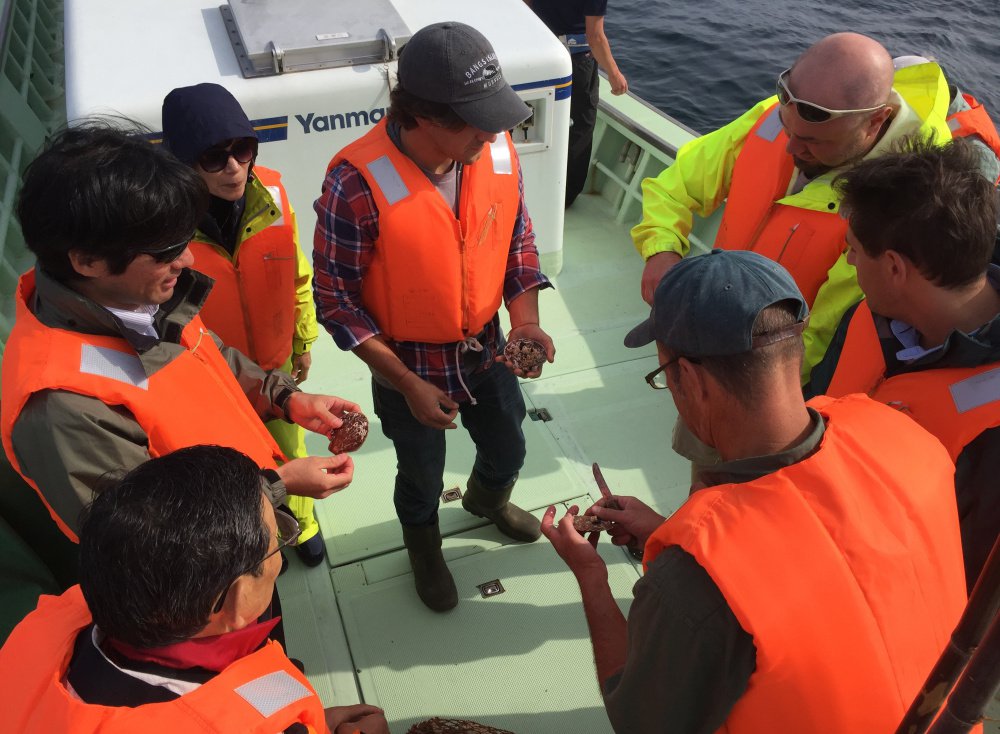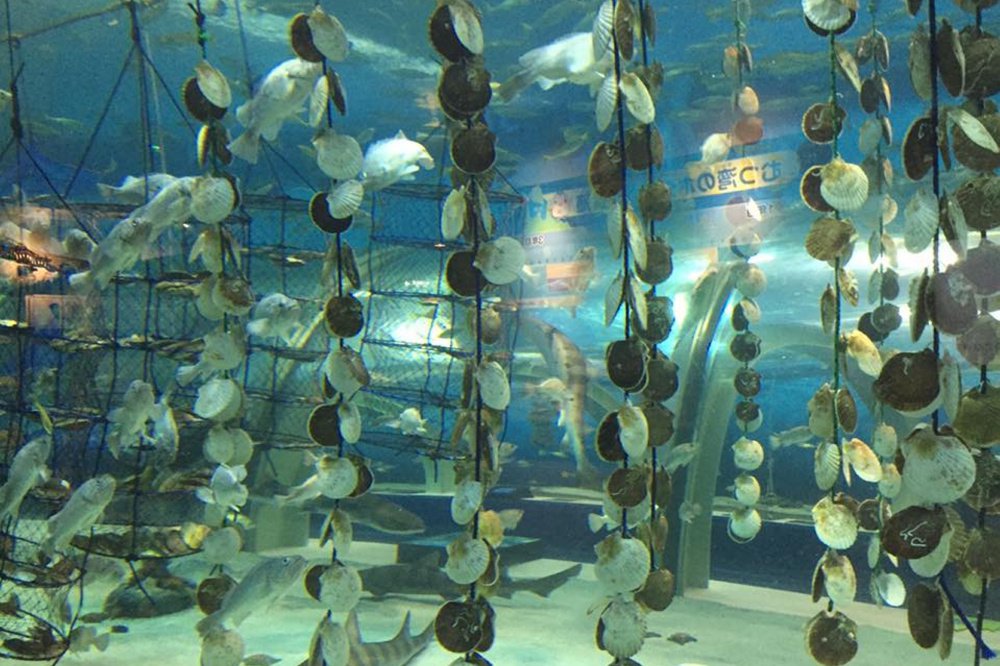A group of Maine fishermen from Cape Elizabeth to Stonington traveled to northern Japan this month to study mechanized techniques for growing scallops.
Funded in part by a grant from the United States-Japan Foundation, the 10-person group traveled to the coastal region of the Aomori prefecture to learn about the machines that the fishing and aquaculture cooperatives there use to grow scallops on vertical lines suspended in the sea, a farming method proven to speed up their growth. The group also learned about shellfish processing and value-added shellfish products.
“We want to get key people there to see what’s possible in scallop farming and to believe it can be replicated in Maine, although at a much smaller scale,” said trip leader Hugh Cowperthwaite, fisheries director for Coastal Enterprises Inc., which promotes rural economic development. “This exchange allows us to make new and deeper connections. Can this industry find its footing and create jobs in Maine?”
This isn’t the first time that Mainers have traveled to Aomori, which is more than 6,200 miles from Portland. The Japanese shellfish community started the information exchange in 1999, with a focus on how to collect wild seed and grow scallops from juveniles to adults. During Cowperthwaite’s first trip in 2010, he learned how Japan has mechanized several of the most labor-intensive steps of scallop farming.
Now, CEI is using a $68,500 grant from the Maine Technology Institute to buy machines to put pins in the vertical hanging lines, drill holes in the “ears” of the scallop shells, and then clean the growth off the scallops with a boat-top washer as they remain growing on the lines. Maine shellfish farmers have always done these time-consuming parts of the grow-out process by hand.
The delegation believes scallop farmers here can learn how to expand Maine’s struggling scallop industry. The fishery reached a low in 2009 when only 80,000 pounds of meat were harvested, the result of closures and a severely shortened scallop season to protect the mollusk.
The Maine fishery was worth $5.7 million in 2015, down from $7.6 million in 2014, because of a drop in meat pounds from more than 605,000 to about 453,000. The price per pound fell just 3 cents, however, from $12.70 to $12.67. The 2016 numbers aren’t in yet, but the season likely ended strongly.
For Matthew Moretti, president of Bangs Island Mussels and Wild Ocean Aquaculture of Portland, the trip to Aomori was “proof of concept.” Moretti currently grows mussels from rafts at leased sites off Falmouth Landing and Bangs Island, as well as kelp, which is Wild Ocean’s latest product line. He went on the Japan trip to decide if he wanted to expand into scallops, too.
“I wanted to see if it was possible,” Moretti said. “The trip to Japan proved to me that we could do it, but now it’s a matter of working the numbers, and trying to figure out what scale we would need to do it on, just how big we would have to go, to make a profit. We’ve been playing around with the idea for some time now, but I feel like I now know exactly what I need to do to make it work, if the numbers work.”
In addition to Cowperthwaite and Moretti, the delegation included Sebastian Belle, director of the Maine Aquaculture Association, and fishermen Gordon Connell of Spruce Head Island, Nate Perry of Cape Elizabeth, Marsden Brewer of Stonington and Robert Brewer of Deer Isle. Dana Morse of Maine Sea Grant, Chris Davis of Maine Aquaculture Innovation Center and Don Hudson of Maine Aomori Sister-State Advisory Council also attended.
The group visited several fishing cooperatives there, went out with scallop farmers on their boats to see how they set their lines and used a wash machine, toured several processing plants to see how the co-ops prepared the scallops for market – including one that freezes the scallops – and visited fish markets to see how Japanese scallop farmers make use of most of the scallop. Americans usually only eat the abductor muscle.
The relationship between Maine and Aomori dates back to 1889, when the 1,500-ton Cheseborough ship, which was made in Bath, wrecked off Japan’s coast. Locals rescued several Mainers from the water and buried those who didn’t survive. A few members of the 2016 Maine delegation who had stayed for a second week of touring traveled to the Cheseborough wreck site this month.
“Two weeks of studying the farming and culture of scallops in Mutsu Bay, Aomori,” wrote Hudson on his blow-by-blow Facebook account of the visit. “We have many memories to process, and a lot of work at home to set up a vibrant new aquaculture fishery.”
Send questions/comments to the editors.





Success. Please wait for the page to reload. If the page does not reload within 5 seconds, please refresh the page.
Enter your email and password to access comments.
Hi, to comment on stories you must . This profile is in addition to your subscription and website login.
Already have a commenting profile? .
Invalid username/password.
Please check your email to confirm and complete your registration.
Only subscribers are eligible to post comments. Please subscribe or login first for digital access. Here’s why.
Use the form below to reset your password. When you've submitted your account email, we will send an email with a reset code.